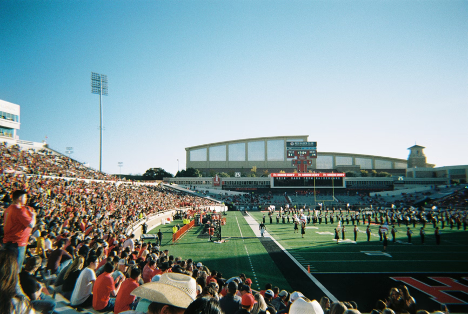Touchdown Technology: Revolutionizing the NCAAF Experience from the Field to the Stands

The National Collegiate Athletic Association Football (NCAAF) has long been a cradle of athletic talent and competitive spirit. In recent years, this venerable institution has undergone a seismic shift, courtesy of technological advancements. This blog post embarks on an exploration of how technology has been intricately woven into the fabric of college football, fundamentally altering everything from gameplay and coaching to the fan experience and player safety.
Advanced Analytics and Player Performance
NCAAF is now deeply entrenched in the age of data analytics. Teams leverage complex algorithms to evaluate player performances, opposition tendencies, and even game-day conditions. For example, universities like Alabama and Ohio State use data analytics for optimizing training, reducing injuries, and enhancing player recruitment strategies. This data-centric approach creates a more scientific and strategic dimension to the sport.
Video Review and Officiating
The implementation of high-definition, multi-angle video technology has been a game-changer for officiating in NCAAF. It has not only improved the accuracy of calls on the field but also provided a valuable tool for teams to analyze performance and opposition tactics in unprecedented detail. The use of drone footage for aerial views and virtual reality for immersive game reviews are further examples of how technology is reshaping coaching and officiating methodologies.
Virtual and Augmented Reality
Technological innovations are revolutionizing the fan experience in NCAAF. Virtual reality (VR) setups, like those introduced by schools such as the University of Michigan, allow fans to experience games from the players’ perspective. Augmented reality (AR), on the other hand, is transforming game-day experiences in stadiums, with apps that overlay stats and play information onto live-action views on fans’ mobile devices.
Social Media and Engagement
The digital era has ushered in a new paradigm of fan engagement. NCAAF teams are now as many digital brands as they are sports teams. Platforms like Twitter, Instagram, and TikTok are used for game updates and building a year-round narrative that keeps fans engaged, involved, and invested in their teams. This includes everything from live-tweeting games to exclusive behind-the-scenes content and interactive fan polls.
Additionally, elements like fantasy football have become integral to the fan experience, naturally intertwining with platforms where fans discuss team strategies and player performances. Furthermore, fans are increasingly referencing resources like FanDuel College football odds, adding another layer of engagement as they analyze and predict game outcomes.
Wearable Technology for Player Safety
Player safety has been significantly bolstered by the advent of wearable technology. Devices like smart helmets, equipped with impact sensors, and biometric monitors are being used to track players’ health metrics in real-time. This data is crucial for identifying potential health risks, like heat exhaustion or cardiac anomalies, during games and practices.
Concussion Prevention and Management
Concussion management is an area where technology has made significant strides. New helmet designs, featuring advanced cushioning materials and sensors, can help prevent concussions. They’re also essential for the post-impact assessment done by doctors and trainers. Additionally, concussion protocols now often include cognitive computer tests to assess players’ readiness to return to play.
Simulation and Virtual Training
The use of simulation technologies for training is becoming increasingly prevalent. Virtual reality setups allow players to experience game-like situations without the physical toll of a real game, providing a safe environment for honing skills and strategies. These simulations are also used for quarterback training, allowing them to practice reading defenses and making decisions in a controlled, repeatable environment.
Biomechanics and Physical Training
Technological advancements in biomechanics provide deeper insights into player movements and physical capabilities. High-speed cameras and motion capture technology can analyze players’ biomechanics, leading to more effective and personalized training programs. This not only enhances performance but also plays a crucial role in injury prevention.
The Future of Technology in NCAAF
As technology continues evolving, its role in NCAAF is poised for even greater expansion. Innovations like AI-driven strategy development, enhanced fan interaction platforms, and further advances in player safety technology will continue to shape the future of college football. The challenge will be in balancing these technological advancements with the traditional game aspects that fans and players love.
Conclusion
The integration of technology into NCAAF has created a new era in college football. It has revolutionized how the game is played, coached, and experienced. While these advancements bring many benefits, they also come with challenges that need to be thoughtfully managed. As we look to the future, it is clear that technology will continue to be a driving force in this NCAAF’s evolution.